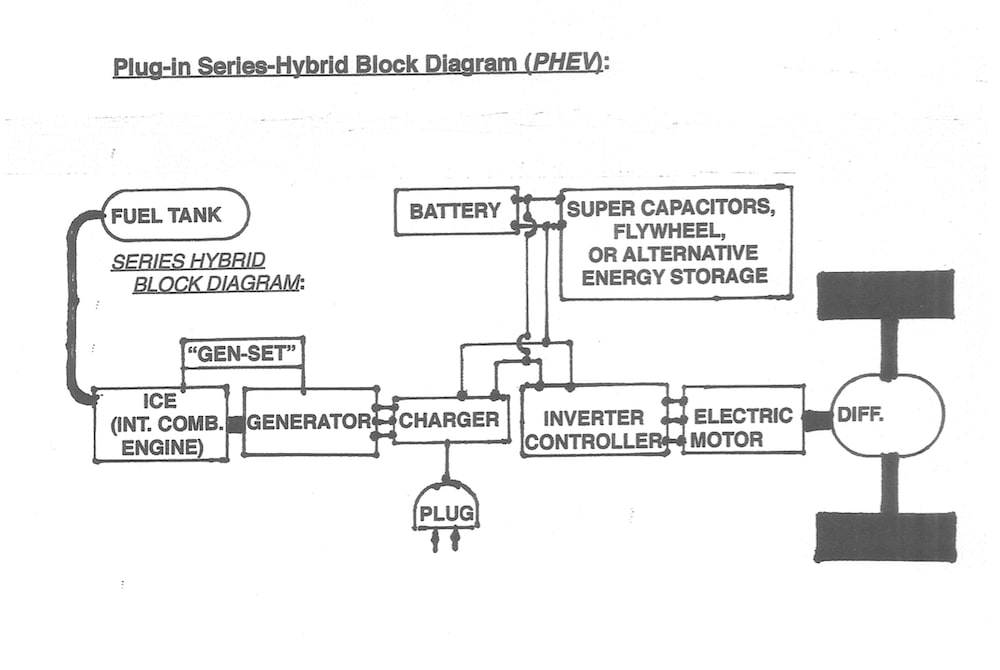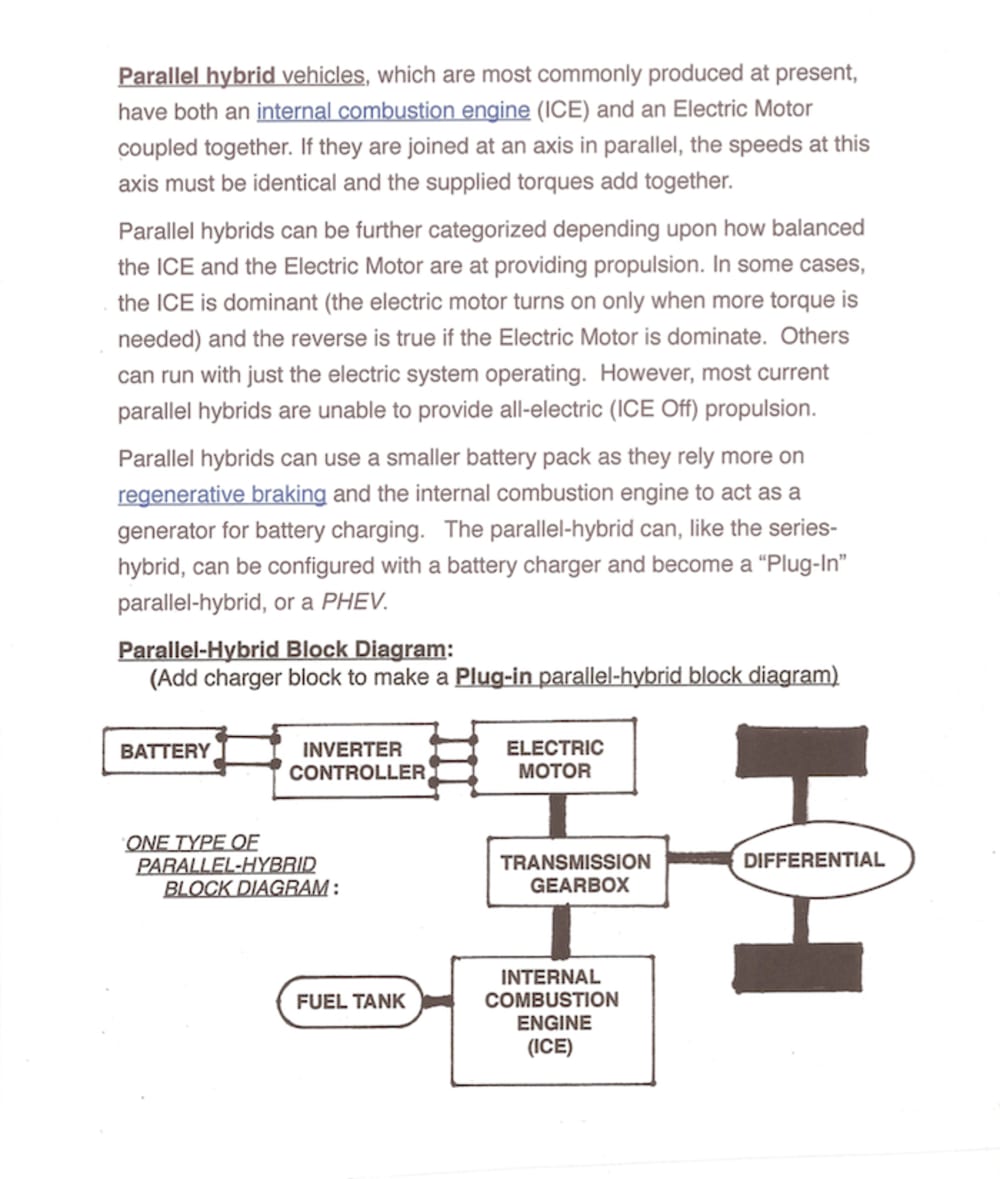Automotive Manufacturers are missing an opportunity to mass produce a small, simple, affordable Electric Vehicle (EV) following the examples of the 'Model-T' or 'Volkswagen.' This type of vehicle could be designed around the simple, "Plug-in, Series-Hybrid EV" which, like the RR locomotive, would drive the vehicles wheels with one, or more, electric motor(s) using electricity from a battery or a generator powered by a small Internal Combustion Engine (ICE).
The "series-hybrid EV" has been criticized by unknowing people as being inefficient. Some have said it is not more efficient than an ICE vehicle. They also argue the more complex plug-in parallel-hybrid has the efficiency advantage. There exists a list of 9 reasons why a plug-in, series-hybrid EV should be more efficient and less expensive to manufacture than a fossil fuel driven vehicle or a more complex plug-in parallel-hybrid. [To save space, I only list the most obvious argument on that list:
"For 75+ years, 'Series-Hybrid' Diesel-Electric Railroad Locomotives, which are driven by electric motors powered by ICE driven generator(s), have shown themselves to be extremely efficient and practical over the steam locomotive, or other power plants, for railroads."]
Proper design, development and manufacturing of a small, simple, affordable series-hybrid EV for the masses would solve these problems:
1) "High EV Vehicle Cost / Pricing."
2) "High Cost of Ownership; low maintenance vehicle required."
2) "EV Vehicle Range Anxiety; no worry about running out of electricity."
3) "Smaller Battery" than a 100% Battery EV (BEV); reduces weight and cost and increases cargo space and load capability." [For a small, light, series-hybrid vehicle, a battery of 10kWh to 12kWh would likely produce a 'battery only' range on the order of 40 to 50 miles before needing assistance from the ICE-Generator Set. The average person drives less than 40 or 50 miles per day which means the vehicle would only require the ICE-Generator Set to be used on longer trips.]
The Benefits are:
1) "Mechanical Simplicity; no transmission, torque converter or clutch."
2) "Lower Production Costs."
2) "Less Weight."
3) "Higher Efficiency."
2) "Low Maintenance Costs."
3) "Reduced fossil fuel use and expense."
4) "Reduced Emissions of CO, CO2 and other pollutants."
5) "The use of common modern vehicle manufacturing techniques, like fabrication and assembly automation, plus manufacturing all vehicles to be identical (few or no options) would reduce production costs."
6) "Reduce the need for a large EV charging infrastructure; most charging would be done primarily at home or at work."
7) "Priced for the average buyer, these vehicles should have a huge Market Potential." I would expect that with high volume production of a small, simple, plain-Jane, Plug-in, Series-Hybrid EV vehicle pricing could be under $19,500 in the US and much less in nations that have fewer government regulations and rules for ground vehicles. Low initial price and very low maintenance costs would result in a "Peoples Car" that could fit into the average person's budget.
Please see the three illustrations for additional information on both series and parallel plug-in hybrids...
Like this entry?
-
About the Entrant
- Name:Lee Underkofler
- Type of entry:individual
- Patent status:none





